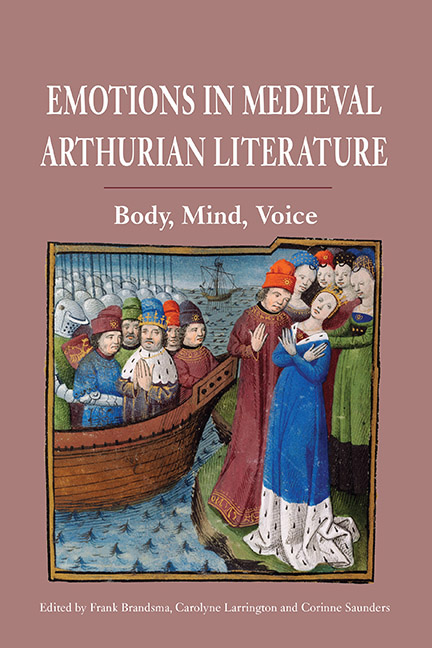5 - Kingship and the Intimacy of Grief in the Alliterative Morte Arthure
Published online by Cambridge University Press: 21 May 2021
Summary
Erec en pesa plus assez
Qu’il n’en mostra semblant as genz;
Mais duelx de roi n’est mie genz,
N’a roi n’avient qu’il face duel. (Erec et Enide, ll. 6516–19)
(This weighed upon Erec much more than he showed people outwardly, but grieving is uncourtly on the part of a king and it does not befit a king to show grief.)
In the context of Chrétien de Troyes’ twelfth-century romance Erec et Enide, it is clear that courtly, and specifically kingly, codes of conduct do not permit the outward expression of grief. But such behavioural codes, as Felicity Riddy has demonstrated, are common constraints on masculine behaviour in the romance tradition. While men in romance settings often express grief and sorrow at bereavement with extravagant tears and gestures, there is a marked distinction between behaviours appropriate to the domestic setting and those which might be expressed publicly. This essay examines the way in which the behaviour of the grieving King Arthur exists in a liminal space where the emotions which are normally reserved for private situations can occur in a public setting, while still retaining a high degree of intimacy.
There are a number of portrayals of grief in the course of the Alliterative Morte Arthure's narrative. Particularly detailed attention is given to Arthur's grief at Gawain's death, and this instinctive display of sorrow is problematised by the king's attendants and onlookers. Strong social pressures influence the expression of grief, and the response of others to such extreme emotion is a notable feature of this text. There is a tension between public and private responses to death, expressed in terms of gendered behaviours. Grief, and specifically weeping, is figured as feminine, but the enactment of revenge is considered ‘manly’. However, the temporal gap between loss and revenge allows the opening up of a feminised space, enabling the expression of emotion as a precursor to vengeance. This is a feature of much heroic literature: on the medieval battlefield such private space is temporarily ‘marked out’ around a grieving king or warrior, allowing a pause in the communal enterprise where individual emotions take priority.
- Type
- Chapter
- Information
- Emotions in Medieval Arthurian LiteratureBody, Mind, Voice, pp. 87 - 104Publisher: Boydell & BrewerPrint publication year: 2015
- 1
- Cited by



